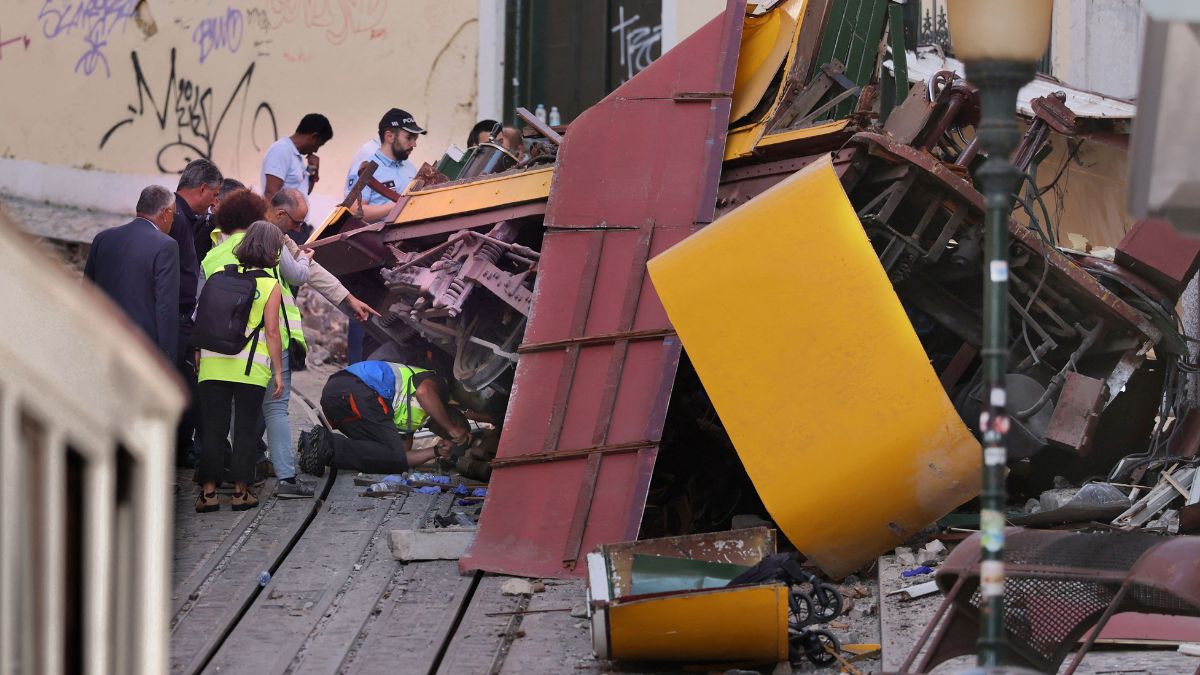Beyond rails: The tragic loss of Lisbon's iconic Glória Funicular

The derailment of the Glória-Restauradores tram, widely recognized as the Elevador da Glória (Gloria Elevator), on Wednesday has disconcerted Lisbon and the country alike. In the accident, 15 lives were lost. Twenty-three sustained injuries, and a few remain in a critical state.
The derailment has impacted the core of the city’s persona and goes beyond initial sorrow. For over a century, this brief yet precipitous excursion between Praça dos Restauradores and the Bairro Alto was more than public transport. It was also a moving postcard, a living museum piece, and a rite of passage for visitors.
The writer himself uses this tram frequently to commute to his research studio and had narrowly escaped the crash.
The Glória Funicular, inaugurated on October 24, 1885, was conceived by Engineer Raoul Mesnier du Ponsard. It underwent a swift conversion to steam power after its initial actuation via water, with a subsequent shift to electricity by 1915. Boasting lustrous wood interiors, brass fixtures, plus the muted drone during ascent along Calçada da Glória, its two energetic yellow trams, launched during the 1920s, became uniquely identifiable.
In 1997, since its position within Lisbon’s cultural heritage was secure, the line was officially designated as a National Monument. For anyone visiting this part of the city, it was part of the city’s daily rhythm and routine, a familiar sight and sound on the steep slope beside Avenida da Liberdade and Restauradores street.
An Insignia of Lisbon
Since its inauguration in 1885, the Glória funicular has been more than a transport link. It was a bridge between the commercial bustle of Praça dos Restauradores (Restauradores Square) and the Bairro Alto. It's two yellow cable cars (the iconic colours of Lisbon’s trams), climbing the steep incline and down with a rhythmic creak, and eventually became part of the city’s daily soundtrack.
The funicular’s route doubled as an open-air art gallery, with the city council sponsoring street art panels along the way. This blend of heritage and contemporary culture made it a symbol of Lisbon’s ability to honour its past while embracing the present.
“It was the first tram I ever rode,” said Maria António, 72, who lives near Avenida da Liberdade. “My father took me up to the miradouro (viewpoint) when I was five, and I was shocked and heartbroken,” she added. Many old residents of the place shared the same feeling.
The funicular was a shared ritual, whether it was the residents of the area, tourists, shopkeepers’ workers, or students taking a quick ride, or even night owls heading out for the evening at Bairro Alto. It was a place where strangers actually spoke with each other, and where the city’s hills felt a little less daunting.
For tourists, the Glória was often their first encounter with Lisbon’s heritage. The short three-minute ride offers a quick ride to the top, rather than going all the way round from the Baixa Chiado metro station. On the way, one could see graffiti walls and the slow reveal of the Miradouro de São Pedro de Alcântara, one of the city’s most breathtaking viewpoints.
Tourists have consistently ranked the Glória funicular alongside Tram-28 and the Santa Justa Lift as must-visit places in Lisbon. It was also a photographer’s and Instagrammer’s paradise, where the steep inclination framed by pastel façades, the yellow tram, contrasting with the tiled buildings, and the St George castle in the background.
Carrying millions of passengers annually, the Glória was both a practical link and a tourism powerhouse. It connected two of the city’s most visited neighbourhoods. It funnelled visitors from downtown shops and theatres to Bairro Alto’s restaurants, bars, pubs, and galleries. It is also connected to the Rato neighbourhood.
For three days, the tracks will remain silent and have been declared a national mourning. The accident has left not just a gap in Lisbon’s transport network, but a wound in its collective memory. The tracks on Bica Funicular, which is the counterpart tram on the other side of the hill, are also shut until further notice. For many, including the writer who has lived here for years, the loss feels personal as a part of the city’s soul has been derailed. The Glória Funicular was never just about getting from A to B. It was about the slow and exhausting climb, the tiled walkway, the view at the top, and the knowledge that you were part of a tradition stretching back 140 years.
Whether it will run again remains uncertain. But for Lisbonites and the countless travellers who have ridden it, the tram will always be a cherished souvenir of the city’s charm and history.
World